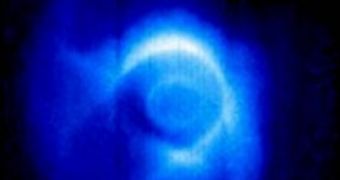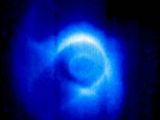The fall of 2008 saw the discovery of a new layer in our planet's protective shield, which was named the ”warm plasma cloak,” on account of the fact that it reminded scientists of a man riding a horse while wearing a cloak. The most interesting feature about this new layer is the fact that its tail closely orients itself in the direction of solar winds, and, furthermore, it now becomes home to many classes of particles, which thus far never fitted into any of the known layers of the atmosphere.
Another outstanding thing about the plasma cloak is the fact that it changes appearances and sizes according to the time of day. Thus, in the morning, it only stretches on the lighted side of the globe, with just a little bit of it on the edges of the dark side. In the afternoon, it's pushed outwards by convective winds, after which time it's pulled out into space by solar winds.
The amazing discovery was made by Charles "Rick" Chappell, a physicist at Vanderbilt University in Nashville, Tennessee, who conducted a team of researchers that pieced together available satellite data spanning decades. Finally, once NASA's Polar satellite ended its 12 year-long run in April 2008, the team had the chance to put every last piece of evidence together, and say for certain that the new layer exists, and that it may be home, at least theoretically, to several exotic particles that have thus far eluded inclusion into any other layer of the magnetosphere.
For perspective, know that the trail left behind by the warm plasma cloak reaches beyond the Moon, and that our satellite passes through it every month, in its eternal rotation around Earth. Dozens of man-made satellites go through it as well, which may explain why there have been disturbances and anomalies in several of them over the years.
"The warm plasma cloak is part of the environment that communications and weather satellites fly in. It will play a role in how much the spacecrafts charge electrically," explained Chappell.
The scientist added that our own magnetosphere could cause serious damage on Earth, seeing how changes in the intensity or direction of the solar winds could trigger it to interfere with our power grids, GPS tracking systems and other sensitive infrastructure.

 14 DAY TRIAL //
14 DAY TRIAL // 
